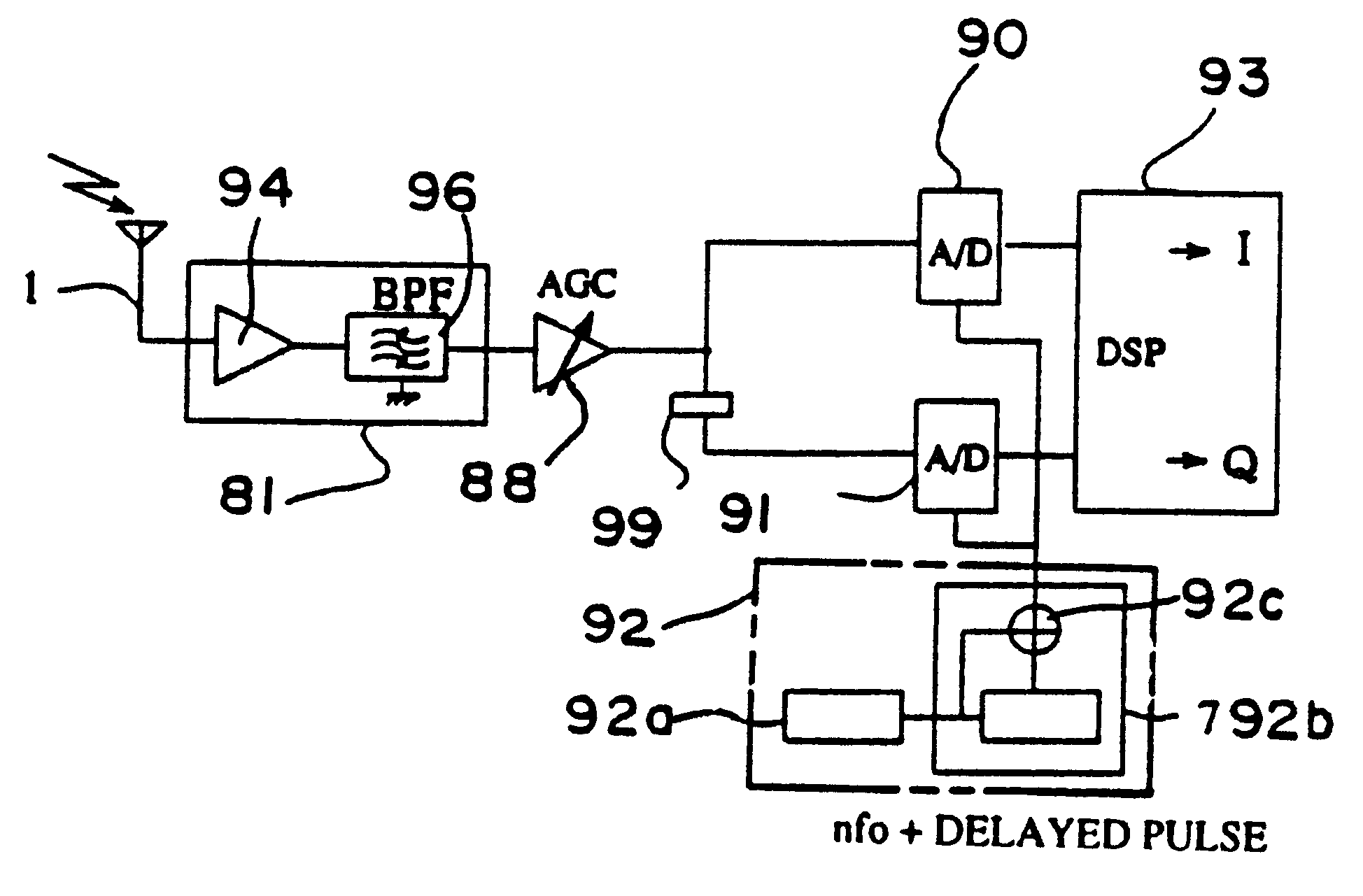Receiving circuit
a technology of receiving circuit and receiving circuit, applied in the field of receiving circuit, can solve the problems of difficulty in direct frequency conversion and direct demodulation, and the inability of the prior system to meet this requirement practically
- Summary
- Abstract
- Description
- Claims
- Application Information
AI Technical Summary
Benefits of technology
Problems solved by technology
Method used
Image
Examples
tenth embodiment
FIG. 10 is an illustration of an arrangement of a receiving circuit according to a tenth embodiment of this invention. In this embodiment, only the first frequency converting circuit 2 is provided for accepting the received signal from the antenna 1, as compared with the first embodiment shown in FIG. 1. After the frequency conversion by this first frequency converting circuit 2, a second frequency converting circuit 15, accepting a frequency corresponding to the inter-channel frequency 2.omega.o from the local frequency signal generating circuit 4B, provides a frequency-converted output in the side where the frequency conversion is not made by the first frequency converting circuit 2, thus ensuring two frequency-converted outputs necessary for the desired channel extraction by a common wave extracting circuit 5L.
Accordingly, in this embodiment, the outputs of the first and second frequency converting circuits 2 and 15 agree with the two outputs of the first and second frequency con...
eleventh embodiment
FIG. 11 is an illustration of an arrangement of a receiving circuit according to an eleventh embodiment of this invention. In this embodiment, as compared with the third embodiment shown in FIG. 3, the frequency converting circuit for accepting the received signal is effected with only the first frequency converting circuit 2 and further the quantizing means is constructed with only a bandpass filter 9C and an A / D converter 10C responsive to the output of the first frequency converting circuit 2. After the A / D conversion by the A / D converter 10C, a digital frequency converting circuit 16, accepting a frequency corresponding to the inter-channel frequency 2.omega.o from a digital frequency generating circuit 17, carries a digital frequency conversion, thus providing a frequency-converted output of the side where the frequency conversion is not made by the first frequency converting circuit 2 so as to obtain two frequency-converted digital outputs necessary for the extraction of the d...
twelfth embodiment
FIG. 12 is an illustration of an arrangement of a receiving circuit according to a twelfth embodiment of this invention. A feature of this embodiment is that as compared with the fifth embodiment shown in FIG. 5 the quadrature demodulating means for accepting the received signal is constructed with only one quadrature demodulating circuit 11 and the two outputs of the quadrature demodulating circuit 11 are frequency-converted in a frequency converting circuit 15A which accepts a frequency corresponding to the inter-channel frequency 2.omega.o from a local frequency signal generating circuit 4B, whereby the frequency-converted output of the side which is not quadrature-demodulated is obtainable to obtain two quadrature-demodulated outputs necessary for the extraction of the desired channel by first and second common wave extracting circuits 5N and 5P.
Thus, according to this embodiment, the outputs of the quadrature demodulating circuit 11 and the frequency converting circuit 15A coin...
PUM
 Login to View More
Login to View More Abstract
Description
Claims
Application Information
 Login to View More
Login to View More - R&D
- Intellectual Property
- Life Sciences
- Materials
- Tech Scout
- Unparalleled Data Quality
- Higher Quality Content
- 60% Fewer Hallucinations
Browse by: Latest US Patents, China's latest patents, Technical Efficacy Thesaurus, Application Domain, Technology Topic, Popular Technical Reports.
© 2025 PatSnap. All rights reserved.Legal|Privacy policy|Modern Slavery Act Transparency Statement|Sitemap|About US| Contact US: help@patsnap.com



